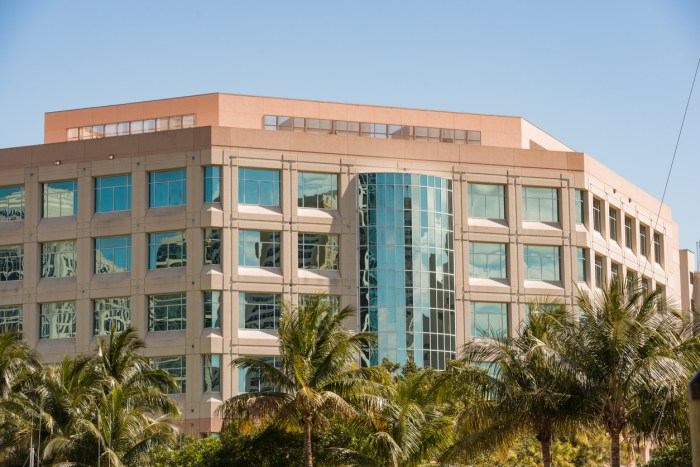Navigating the world of commercial real estate involves significant financial investment and inherent risks. Understanding the intricacies of commercial real estate insurance is paramount to protecting your assets and ensuring business continuity. This guide delves into the various types of coverage, factors influencing premiums, and the claims process, empowering you to make informed decisions and safeguard your valuable property.
From property damage and liability to business interruption and professional liability, the spectrum of potential risks facing commercial real estate owners is broad. This guide aims to demystify the complexities of insurance, providing a clear and concise overview of the essential elements to consider when securing comprehensive protection for your investment.
Understanding Policy Coverage and Exclusions

Securing the right commercial real estate insurance policy is crucial for protecting your investment. A thorough understanding of what your policy covers and, equally important, what it excludes, is essential for mitigating potential financial risks. This section will clarify the typical inclusions and exclusions found in standard commercial real estate insurance policies, helping you make informed decisions about your coverage.
Typical Coverage Included in Commercial Real Estate Insurance
A standard commercial real estate insurance policy typically offers a range of coverages designed to protect your property and business operations. These coverages vary depending on the specific policy and chosen endorsements, but generally include several key elements. It is vital to carefully review your policy documents to fully understand your specific coverage limits and conditions.
- Property Damage: This covers damage to your building and its contents caused by various perils, such as fire, windstorms, vandalism, and sometimes even earthquakes (depending on the location and policy endorsements).
- Liability Coverage: This protects you against financial losses resulting from lawsuits arising from bodily injury or property damage caused by you or your tenants to others on your property. This includes general liability and potentially umbrella liability for higher coverage limits.
- Loss of Rents: If your property becomes uninhabitable due to a covered peril, this coverage compensates you for the lost rental income during the period of repair or reconstruction.
- Business Interruption: This covers the loss of income your business suffers due to a covered event that forces temporary closure. This can include expenses incurred to restore operations.
Common Exclusions Found in Commercial Real Estate Insurance Policies
While commercial real estate insurance offers extensive protection, it’s important to understand the limitations. Many standard policies exclude certain types of events or damages. Knowing these exclusions allows you to take proactive steps to manage potential risks.
- Flood Damage: Flood insurance is typically purchased separately as it is not usually included in standard commercial policies. This is due to the high risk and cost associated with flood events.
- Earthquakes: Similar to flood insurance, earthquake coverage is often a separate policy, particularly in seismically active regions. The potential for catastrophic damage makes this a specialized coverage.
- Acts of War or Terrorism: These events are generally excluded due to the widespread and unpredictable nature of the damage and the difficulty in assessing risk.
- Neglect or Intentional Damage: Damage caused by the policyholder’s negligence or intentional acts is typically not covered. For example, failing to maintain the property leading to significant damage would likely be excluded.
- Wear and Tear: Normal wear and tear on the building is not covered. This is considered a maintenance issue rather than an insured event.
Examples of Claims Denied Due to Policy Exclusions
Understanding real-world scenarios helps illustrate the importance of knowing policy exclusions.
- Scenario 1: A building sustains significant damage during a hurricane. However, the policyholder discovers their policy excludes flood damage, and a substantial portion of the damage was caused by flooding, resulting in a partial denial of the claim.
- Scenario 2: A tenant slips and falls on a poorly maintained walkway. The resulting lawsuit exceeds the policy’s liability limits, leaving the policyholder responsible for the excess costs. This emphasizes the importance of adequate liability coverage limits.
- Scenario 3: A fire damages the building due to faulty wiring caused by years of neglect. The claim is denied because the damage is considered the result of the policyholder’s negligence, a common exclusion in most policies.
Risk Management Strategies for Commercial Real Estate

Proactive risk management is crucial for commercial real estate owners and significantly impacts insurance premiums. By implementing effective strategies, property owners can demonstrate a lower risk profile to insurers, leading to reduced costs and potentially more favorable policy terms. This proactive approach not only saves money but also protects the long-term value and stability of the investment.
Implementing effective risk mitigation strategies is key to minimizing potential losses and maintaining a healthy bottom line. This involves a comprehensive assessment of potential hazards and the development of tailored solutions to address them. By actively managing risks, property owners can create a safer environment for tenants and visitors, reducing the likelihood of costly incidents and insurance claims.
Effective Risk Mitigation Strategies
A well-defined risk management plan should incorporate various strategies to address potential threats. These strategies can be categorized into preventative measures and reactive measures. Preventative measures aim to reduce the likelihood of incidents occurring, while reactive measures focus on minimizing the impact of incidents that do occur. A combination of both is most effective.
Property Maintenance and Security Measures
Regular and thorough property maintenance is paramount in preventing costly repairs and potential liability issues. This includes routine inspections of building systems (HVAC, plumbing, electrical), addressing structural issues promptly, and ensuring compliance with all building codes and safety regulations. Neglecting maintenance can lead to significant damage, increased insurance premiums, and potential legal repercussions. For example, a poorly maintained roof can lead to water damage, resulting in costly repairs and potential business interruption. Similarly, neglecting regular inspections of fire suppression systems can increase the risk of a devastating fire, leading to substantial financial losses and higher insurance premiums.
Regular security measures are also critical. This includes installing and maintaining security systems such as alarm systems, surveillance cameras, and adequate lighting. Security measures deter criminal activity and can significantly reduce the risk of theft, vandalism, and other incidents. For instance, a well-lit parking lot with security cameras can deter car break-ins and reduce the likelihood of liability claims. Employing security personnel, particularly in high-risk areas or during late-night hours, can further enhance security and mitigate risks. The cost of implementing these measures is often far outweighed by the potential savings in reduced insurance premiums and avoided losses from incidents.
Impact of Risk Management on Insurance Premiums
Insurance companies assess risk when determining premiums. Properties with demonstrated proactive risk management measures are viewed as lower risk and, therefore, often qualify for lower premiums. This is because the insurer anticipates fewer claims from these properties. The savings can be substantial, offsetting the costs of implementing risk management strategies over time. For example, a property owner who invests in a comprehensive fire prevention system might see a significant reduction in their insurance premiums, reflecting the lower risk of fire-related claims. Similarly, a property with a robust security system may qualify for a lower premium due to the reduced risk of theft or vandalism.
Last Recap

Protecting your commercial real estate investment requires a proactive approach to risk management and a thorough understanding of insurance coverage. By carefully considering the factors that influence premiums, understanding policy details, and choosing a reputable provider, you can mitigate potential losses and secure the future of your business. This guide has provided a foundational understanding of commercial real estate insurance; however, seeking personalized advice from a qualified insurance professional is crucial for tailoring a policy to your specific needs and circumstances.
Common Queries
What is the difference between commercial and residential real estate insurance?
Commercial real estate insurance covers properties used for business purposes, offering broader coverage for liability and business interruption, unlike residential policies focused on personal dwellings.
How often should I review my commercial real estate insurance policy?
Annually review your policy to ensure it aligns with your evolving needs and risk profile. Significant changes in your business or property should trigger an immediate review.
Can I get insurance for a property under construction?
Yes, builder’s risk insurance specifically covers properties during the construction phase, protecting against damage or loss before completion.
What is the role of an insurance broker in securing commercial real estate insurance?
Brokers act as intermediaries, comparing policies from multiple insurers to find the best coverage and price for your specific needs. They can simplify the process and offer expert advice.